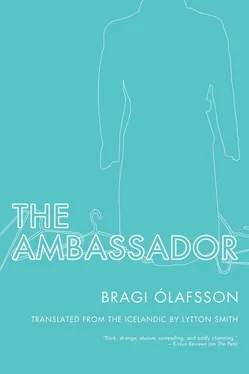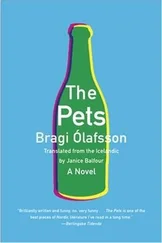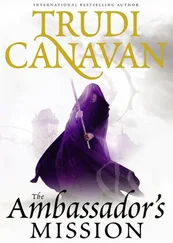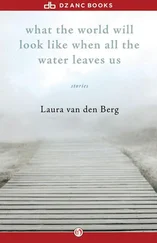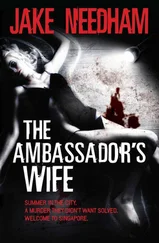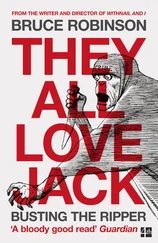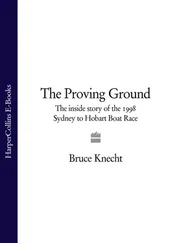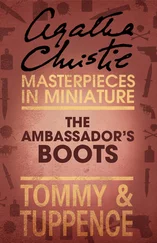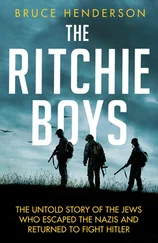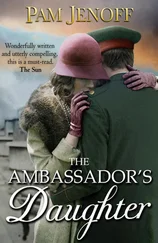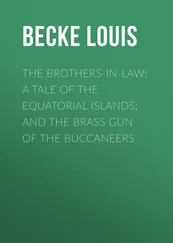He’d read this story in a booklet in the hotel reception, and as he goes on his way down Gedimino Prospektas he is suddenly so immersed in drawing analogies between the wolf on the slopes and what his father told him about the rumors regarding assertions that he doesn’t notice the magnificent façade of the National Theater across the street: four very prominent and unmistakable copper figures stretching themselves out over the street and literally shouting for attention with their dramatic facial expressions and hand gestures. Sturla had seen pictures of these silent delegates for the art of theater in some booklet or newspaper, and he would have recognized them if he’d had his eyes open during his walk. But at the moment nothing in his surroundings can attract his attention; the word “wolf, wolf” resounds in his head, and he realizes his father has provided him with a warning, just like the wolf on the hill. He hasn’t really thought about what the wolf symbolizes, but Sturla feels that everyday events and objects around him frequently turn out to have been insightful prophecies, and so he makes up his mind that the image of the wolf must be some form of omen — like the dwarf in reception, perhaps — and, moreover, he connects it to the “house on the hill” line in the poem which he fears is one of the sources of the man’s thoughts, that man who spoke with the journalist, according to Jónatan.
Could it be that the house on the hill — which had actually found its way into Sturla’s poem thirty years ago — was also the castle of this Count Gediminas, long before Sturla had any idea such a castle existed? Earlier in the week, on the way down Bankastræti, he had considered the idea — and, in fact, it seemed to actually be the case, given when the poem was originally written — that the high-roofed house in the poem was the Grammar School in Reykjavík; of course, it could be, as his father Jón had suggested, that the house on the hill was the overcast residence of Norman Bates and his mother, but at this moment Sturla is most taken with the new possibility that the poem was composed about something its writer hadn’t yet experienced, just as Sturla has recently written about his experience at the poetry festival before the festival even took place. But it could also be argued that his insignificant lyrical creation dealt with all these, or — and this was perhaps more likely — had nothing to do with any of them. And Sturla thinks this is true of all poems, as far as the much debated but ill-explained definition of the riddle called poetry is concerned: they are about everything and nothing at the same time. The whole world — everything that has happened in the kingdom of nature until now — is contained in every text which, given his aforementioned definition, counts as poetry in Sturla’s eyes. As he is approaching the cathedral square he recalls Miroslav Holub’s poem, which suggests that poetry is found in everything, a fact that is also the chief argument against poetry, but he immediately begins to doubt the Czech poet’s assertion when he observes the white, neo-classical edifice which dominates the square, on the left side of a handsome tower: the cathedral of the city of Vilnius.
The façade of the church boasts a gigantic colonnade, which Sturla thinks looks like it is made out of plastic or cork — like some sweeping meringue, to use a clichéd metaphor from the world of baking. But as he convinces himself that the edifice he is now approaching looks with every step more and more like a department store and less like a refuge where humble mortals confront God, he tells himself it isn’t a good idea for him to be forming judgments given the prickly mood he is in at the moment. He isn’t in the same cheerful mood as when he woke up two hours ago; he can’t shake off the less-than-amusing message from his father. On the other hand, he is fascinated by the white-painted tower in the square. Was it possible that Jónatan hadn’t seen the essence of the article? Sturla goes up to the tower to see whether he is allowed to enter, but it turns out he can’t. What on earth did the half-witted editor mean by saying that someone had been making comments about assertions ? Had Jónas lied when he told Sturla thirty years ago at Hressó that no one had ever seen his poetry? There are a significant number of tourists around the tower, and it comes to Sturla’s attention that many have taken their winter clothes off; it has warmed up, and he deliberates whether he should head back to the hotel and divest himself of his overcoat before continuing into the old downtown. But just then a cool breeze, like the blast of an air conditioner, plays around him, and he is glad to have a reason to keep wearing his new coat, which he is doing his best not to congratulate himself again for buying.
After taking an hour-long stroll around the friendly downtown Sturla feels much more light-hearted, and he sits down at a likeable restaurant on the city hall square, orders a glass of beer, and smokes a few cigarettes. He realizes he is hungry and asks the waitress for the menu, but then remembers the suggestion of the man who he met in reception earlier that morning, Jokûbas. He decides to find Pilies Street and see whether he might get to meet Liliya Boguinskaia, who Jokûbas had said in all likelihood would be there around midday. It turns out that Pilies Street is only a few steps away; it lies down from the city hall square towards the cathedral square, a very diverting little pedestrian street with an assortment of stores and restaurants (as Sturla imagines to himself it would be described in a tourist brochure).
It is more or less in the middle of Sturla’s thought about whether or not buskers play in the otherwise lively downtown that he hears the distant sound of live music. He recognizes the melody, and as he heads towards the sound he remembers it is a tune by Rod Stewart and the Faces, although he can’t quite recall the title. The performer is a fairly small man, probably around fifty, wearing cowboy boots, narrow black jeans, a frayed dark-grey suit jacket with sleeves that look rather like they had gone through some sort of shredder, and he is wearing on his head a broad-rimmed hat that matches the boots. He is standing in front of a restaurant and he is playing an acoustic bass guitar with an unusually long neck — an instrument Sturla didn’t know existed before he saw his son Egill playing one at a concert in Reykjavík several years ago. Although the raspy singing of this rather gloomy-looking man rises above his bass playing — a surprisingly weak sound for such a huge instrument — all his concentration seems directed at the instrument, and Sturla assumes he can pass by unnoticed, something he is happy about since he has no coins in his pocket to give him. In his overcoat pocket is his hotel key and the hazelnut from the airport — as he searches through his pockets he also finds the ticket for the VCR he took to the repair shop before he left — and it occurs to Sturla that he could of course give the man the nut.
Wasn’t it a good idea, giving someone in need a lucky charm? Though perhaps Sturla hasn’t gotten his full use of this lucky charm yet.
As he moves past the musician, and makes a sustained attempt to remember the name of the song, the nut in his pocket reminds him of how seriously self-incriminating the book he has just published is. It won’t take more than one phone conversation for it to be shoved in his face. He keeps looking out for the restaurant, which he is beginning to suspect he doesn’t have the correct name for. When he reaches the bottom of the street he asks a young man where the place is and heads back up the street with him; it is further up, but worth going a little way for, since it is one of the best restaurants in the city.
Читать дальше
